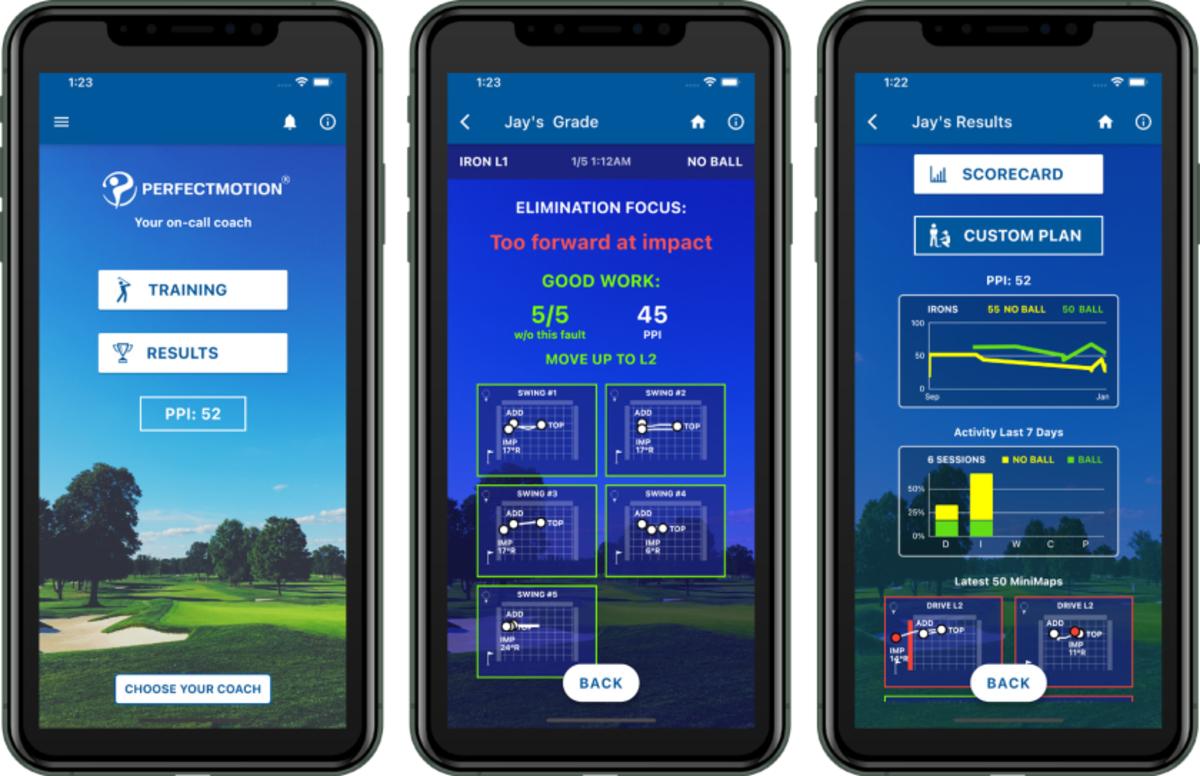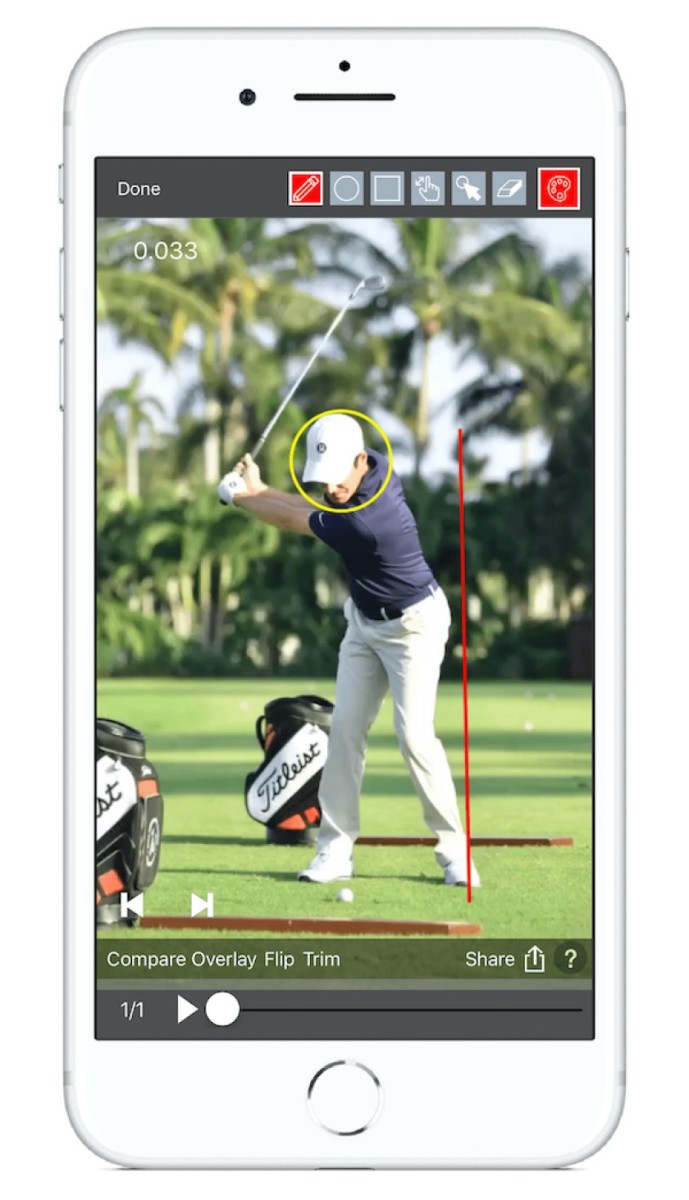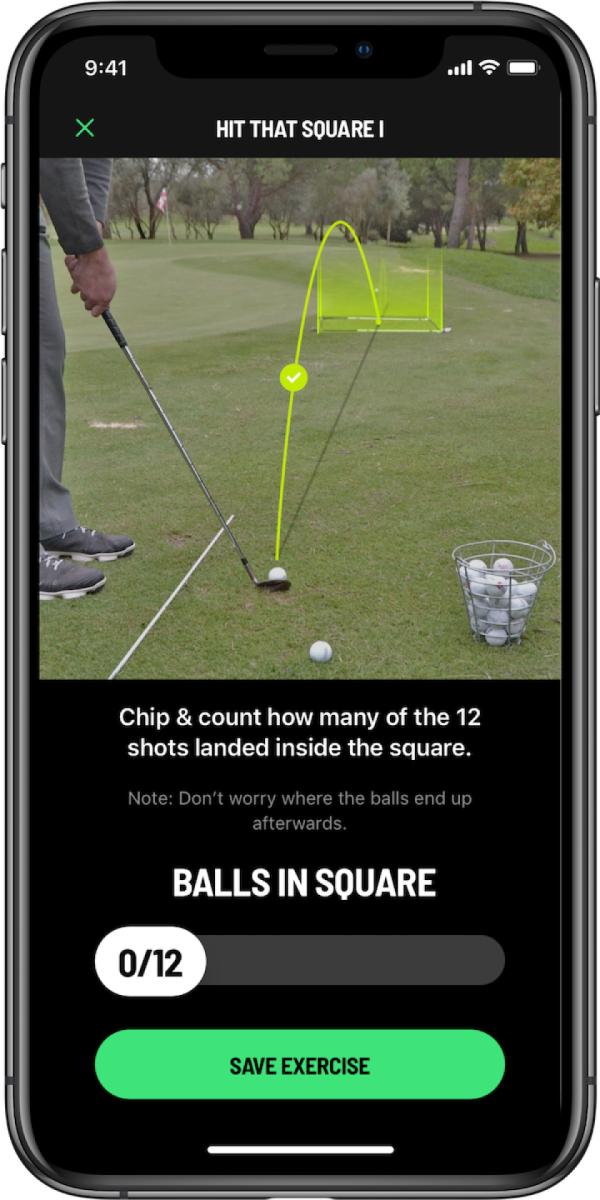Golf apps bring instruction, deliberate practice into focus

Say what you will about smart phones and our society’s obsessive attachment to them, but some environments do exist where the focus on that iPhone or Samsung Galaxy in your hands can be beneficial.
One such environment — for golfers, anyway — is the driving range.
A slew of apps are reinvigorating and redefining everyday practice sessions. From virtual and video-based lessons with instructors stationed hundreds or even thousands of miles away to training programs that introduce skills-based challenges — which hold players accountable for each swing on the range — these apps have the potential to elevate players’ games and subsequently lower their scores.
A New Era In Swing Lessons
It can be argued that every amateur golfer would benefit from regular lessons, but for the vast majority of them, that’s simply not a realistic proposition.
Whether it’s because of cost, scheduling conflicts or mere intimidation, golfers who could benefit greatly from a knowledgeable instructor’s guidance are, more often than not, struggling on their own.

That’s where an app like PerfectMotion can help. Utilizing the camera in a golfer’s phone, the app’s AI-backed programing analyzes the movement of key areas of the body during the swing and records the tracing of the golfer’s core body motion from the address position through impact. Users can then connect with one of eight instructors, including former PGA Tour player Chip Beck, who will review the documentation of a user’s swing and share video drills and guidance to help players shore up their flaws.
PerfectMotion’s effectiveness for highlighting areas of weakness in a swing is quickly substantiated during the first couple of minutes of a conversation that I had with Beck about the app.
“I know a lot about your swing already,” he said after receiving a few baseline reports of my swing, which I had previously submitted using the app. “It looks like you don’t use your hips as effectively as you can.”
He’s right. Limited hip turn is something that other instructors have pointed out to me during in-person lessons over the years, and it’s something that was flagged when I tested the K-Player vest at the PGA Merchandise Show a few years ago. However, unlike the K-Player vest, which costs $2,500 for the hardware and then $19 per month for software access, PerfectMotion is a free app that then costs only $5.99 month for unlimited training sessions.
The app is not without its flaws. Failure to execute a swing during the allotted amount of time will sometimes register that a swing was made and with perfect motion, which can inaccurately influence a user’s baseline metrics. And wireless headphones or earbuds are a must, since it can be difficult to hear the app’s swing prompts at a busy, outdoor range.
Those shortcomings aside, PerfectMotion succeeds for its ability to isolate a user’s swing flaws and to guide them through the necessary training to fix those issues, one mistake at a time. As Beck points out, the app can even detect mechanical issues — like a player being too far forward at the point of impact — that are difficult to see with the naked eye.
“It’s real artificial intelligence because the computer does a lot of analysis and diagnoses it for you,” he said. “When I have faults in my golf swing, my eye can’t pick it up but the app can because it’s such a precise diagnostic tool."

Like PerfectMotion, the V1 Golf app serves as a virtual matchmaker between golfers and instructors, providing them with a platform for interactive remote lessons. The free app (supported by advertising) allows golfers to film and share their swings with a teaching pro of their choice, who will then provide video lessons with voice-over instruction and visual feedback through telestration.
Although it’s not required that users have an existing in-person relationship with an instructor, many of them do. In those circumstances, the app-based guidance that those golfers receive outside of normal lesson times often enhances the speed at which they can improve.
“What we can accomplish with remote lessons is helping golfers graduate to the next step,” said Chandler Rusk, a master instructor who works for the Graves Golf Academy. “Our in-person instruction teaches them what to do and how to do it, but remote lessons enable us to help our students ingrain their proper practice habits. Before and after videos can also keep students motivated to improve. The V1 app makes it easy to engage personally and make progress with our clients when hands-on instruction isn’t convenient.”
Practice With Purpose
So often, average amateur golfers hit some of their best shots at the range, only to struggle out on the course. It’s an unwanted transition that can happen from one day to the next, although the shift can sometimes occur in a matter of minutes as players warm up before their round and then head to the first tee.
Although puzzling to many golfers who have suffered from this transformation, sports psychologists have a clear understanding of how such a metamorphosis can occur.
“Go to any practice tee or driving range and watch the way most golfers hit balls,” Bob Rotella writes in his book Golf Is Not a Game of Perfect. “Many of them don’t even bother to select a target before they hit a ball. … They bash golf ball after golf ball into the ether, blithely unconcerned with hitting a target.”
Rotella surmises that golfers with this type of practice regimen quickly regress to feeling uncomfortable on the course once they find themselves in situations where they are required to hit balls to a specific target. He’s right, of course; but the average golfer’s approach to practice at the range is self-defeating for an additional reason.
With a bucket of balls nearby, most golfers feel very little pressure when preparing to hit the ball at their feet. They know that they have dozens more, and that puts them at ease. Out on the course, however, where every swing and every shot counts, those golfers can’t replicate the same level of relaxation that they felt on the range. They haven’t trained to stay loose, nor have they learned how to hit good shots while feeling tense.

Fortunately, the Core Golf app can rectify the bad habits that typically develop from both of these scenarios. The app offers a steadily increasing number of drills within six categories — putting, chipping, pitching, bunker play, irons, and woods/hybrids — that golfers can complete to better evaluate their game and what they need to devote more practice.
Many of the drills require players to focus on specific targets or to hit shots to an imaginary 15- or 20-yard fairway. The hybrid control drill, for example, requires players to imagine a 22-yard-wide fairway, then hit 15 shots with a hybrid from the ground, calculating how many of those 15 land on the fairway. The app also requires players to first input their official or estimated handicap, which determines how many successful shots must be hit in each drill for the player to earn a passing grade.
Like the game of golf itself, the app requires users to be honest, but its benefits are obvious. Not only does the app change players’ perceptions of the driving range and how they can — and should — hit shots during a practice session, it also makes each of those practice shots more meaningful. In doing so, golfers who use the app learn how to train their swings to perform well under pressure.
Sign up to receive the Morning Read newsletter, along with Where To Golf Next and The Equipment Insider.
